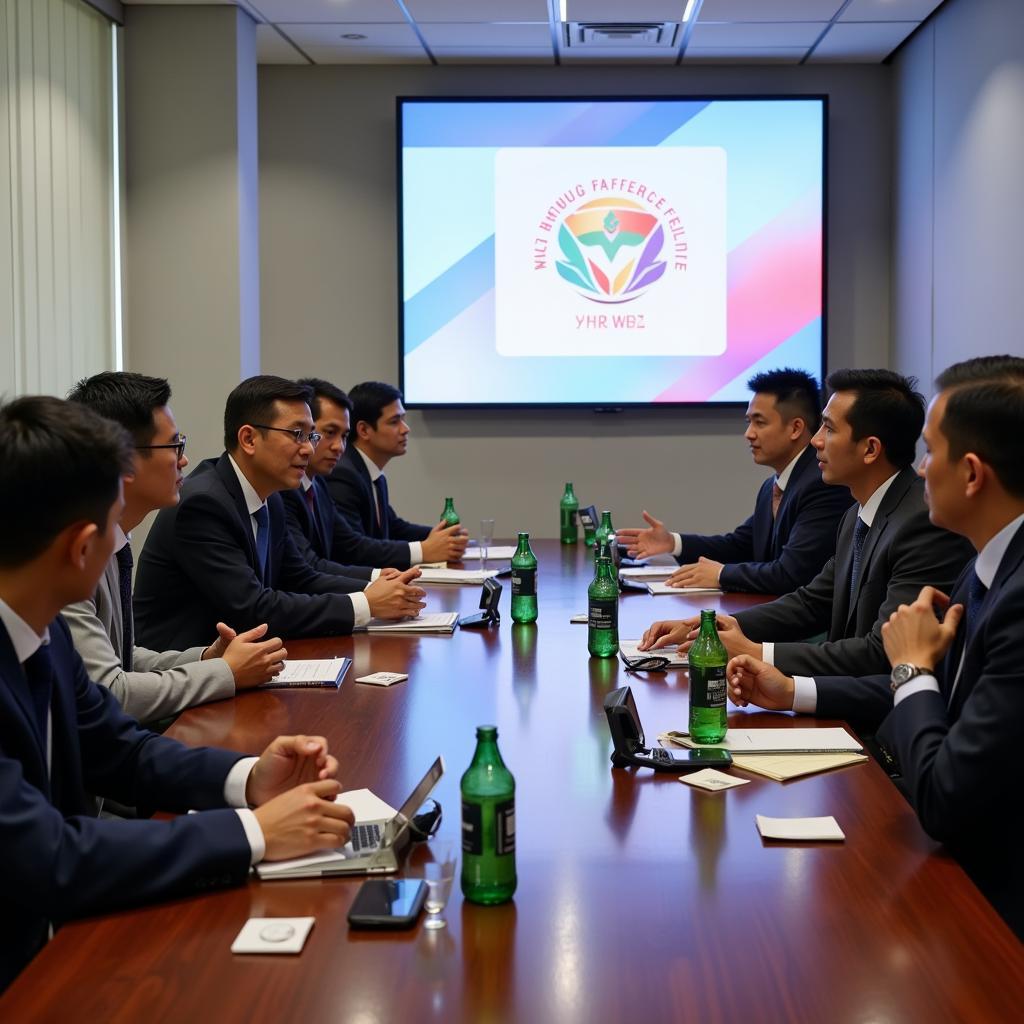Should the V League Open its Doors to ASEAN Players?
November 12, 2024The V League opening its doors to ASEAN players is a hot topic, sparking debate amongst fans, players, and officials. This article dives into the potential benefits and drawbacks of such a move, exploring its impact on Vietnamese football and the broader ASEAN football landscape.
The Potential Benefits of Welcoming ASEAN Talent
Opening the V League to ASEAN players could inject a much-needed dose of competition and excitement. It could elevate the overall quality of play, pushing local players to improve their skills and tactics. This increased competition could also attract more fans to stadiums and screens, boosting the league’s popularity and financial viability.
Imagine a Thai striker with lightning-fast reflexes facing off against a Vietnamese defender known for his unwavering resilience. The clash of styles and the heightened intensity would undoubtedly be a spectacle. Further, the presence of international players could attract more sponsorships and investment, improving the league’s infrastructure and resources.
The influx of ASEAN talent could also foster greater regional cooperation and understanding. It could create opportunities for cultural exchange and strengthen sporting ties between nations. The V League could become a hub for Southeast Asian football, attracting talented players from across the region and raising the profile of Vietnamese football on the international stage. This would not only benefit the V League but also contribute to the overall development of ASEAN football.
Challenges and Concerns of Integrating ASEAN Players
While the potential benefits are enticing, there are valid concerns about integrating ASEAN players into the V League. One key concern revolves around the potential displacement of local talent. Would the influx of foreign players limit opportunities for young Vietnamese players to develop and shine? Striking a balance between attracting international talent and nurturing homegrown players is crucial.
Another challenge lies in ensuring fair play and preventing exploitation. Clear regulations and robust oversight mechanisms are necessary to safeguard the rights of both local and international players. Issues such as salary caps, player quotas, and contract disputes need to be carefully addressed to maintain the integrity and stability of the league.
 Challenges of Integrating ASEAN Players into the V League
Challenges of Integrating ASEAN Players into the V League
Furthermore, the cultural and linguistic differences could pose integration challenges. While football is a universal language, off-field communication and cultural understanding are essential for team cohesion and success. Support systems for international players, such as language classes and cultural orientation programs, would be vital for smooth integration.
What Would It Take for the V League to Successfully Integrate ASEAN Players?
Successful integration requires careful planning and execution. A comprehensive strategy that addresses the potential challenges and maximizes the benefits is essential. This includes developing clear regulations, investing in infrastructure, and fostering a welcoming environment for international players. Collaboration between league officials, clubs, and player associations is crucial for smooth implementation.
“A well-structured integration plan, with clear regulations and support systems, is crucial for maximizing the benefits and minimizing the risks,” says Nguyen Phan Anh Tuan, a prominent Vietnamese football analyst. “It’s about creating a win-win situation for both the league and the players.”
 Successful integration of ASEAN players in the V League
Successful integration of ASEAN players in the V League
Furthermore, investing in youth development programs is vital for ensuring the continued growth of Vietnamese talent. Providing young players with access to high-quality training and competitive opportunities will help them reach their full potential and compete effectively with international players. “Investing in youth development is not just about producing future stars; it’s about building a strong foundation for the future of Vietnamese football,” adds Le Huynh Duc, a respected Vietnamese football coach.
Conclusion
Opening the V League to ASEAN players presents both opportunities and challenges. While it could elevate the league’s competitiveness and attract greater investment, careful planning and execution are crucial for successful integration. By addressing the potential challenges and focusing on creating a sustainable and inclusive environment, the V League can unlock the full potential of ASEAN talent and propel Vietnamese football to new heights. The V League opening its doors to ASEAN players could be a game-changer, but only if it’s done right.
FAQ
- What are the potential benefits of allowing ASEAN players in the V League?
- What are the potential challenges of integrating ASEAN players?
- How can the V League ensure fair competition with ASEAN players?
- What support systems are needed for ASEAN players in the V League?
- How can the V League balance attracting foreign talent and nurturing local players?
- What role do clubs play in integrating ASEAN players?
- How can the V League become a hub for Southeast Asian football?
For support, please contact us at Phone: 0396443476, Email: [email protected], or visit our office at 23 Tháng 3, Đắk Nia, Gia Nghĩa, Đắk Nông, Vietnam. We have a 24/7 customer service team.